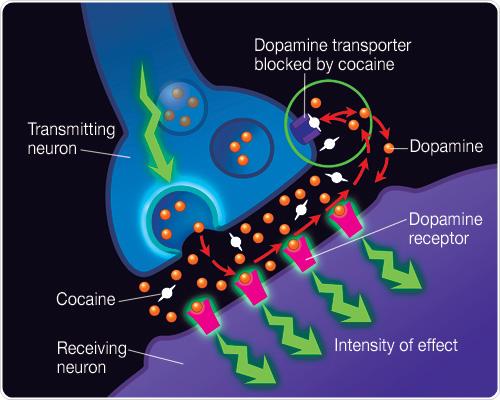Site Under Development, Content Population and SEO, Soft Launch 1st January 2020
Dopamine’s chemical formula is C6H3(OH)2-CH2-CH2-NH2 and its chemical name is "4-(2-aminoethyl)benzene-1,2-diol" and its abbreviation is "DA."
Dopamine is a cathecholamine. This means it has a Cathechol nucleus and is a precursor to norepinephrine (noradrenaline) and then epinephrine (adrenaline) in the biosynthetic pathways for these neurotransmitters.
Dopamine is a derivative of the amino acid tyrosine. Tyrosine is modified by tyrosine hydroxylase to form DOPA. This is a very important step in the formation of Dopamine and is called the rate limiting step.
DOPA decarboxylase then removes carbon dioxide from DOPA to for dopamine (C8H11NO2). Dopamine then serves as a precursor to norepinephrine and epinephrine.
Once the cathecholamines like Dopamine, Norepinephrine and Epinephrine are formed they are packaged in granulated vesicles to be transmitted across the synapse in response to a stimuli.
Dopamine is mainly synthesized in areas of the central and peripheral nervous systems. It is synthesized in the hypothalamus, the arcuate nucleus, and the caudate nucleus of the brain. Chromaffin cells produce dopamine within the dopaminergic regions of the brain. It is mainly the nervous tissue and the medulla of the adrenal glands that synthesize Dopamine.
The action of dopamine is terminated by two methods:
Cocaine is one of the drugs of abuse that increases the presence of dopamine in the cleft between the synaptic ends of the nerves. This increases the intensity of action of dopamine in the effective nerves.
